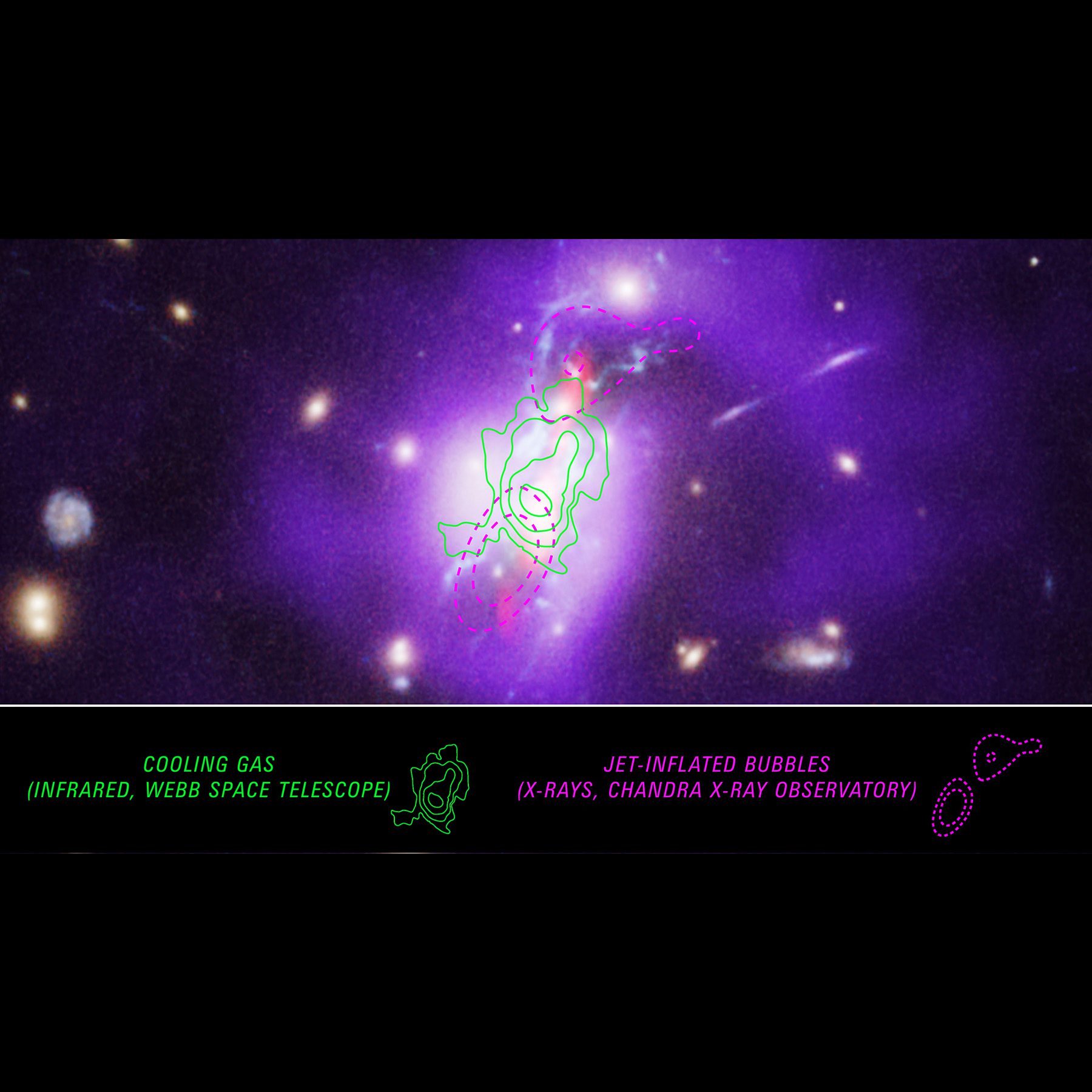
Scientists utilizing NASA’s James Webb Space Telescope have uncovered the secret behind the rapid star formation occurring in a colossal galaxy cluster. This breakthrough builds upon over ten years of research conducted with NASA’s Chandra X-ray Observatory, Hubble Space Telescope, and various ground-based observatories.
The Phoenix cluster, located 5.8 billion light-years away from Earth, is an enticing subject for astronomers because of its remarkable characteristics. Notably, it exhibits a surprising combination of intense gas cooling and a remarkable rate of star formation, despite the presence of a supermassive black hole at its core, which has a mass equivalent to about 10 billion suns. Typically, in other galaxy clusters, the powerful radiation and energetic particles emitted by the central black hole inhibit gas cooling enough to trigger star formation. Researchers have focused on analyzing gas flows within the Phoenix cluster to unravel the mechanics behind its extraordinary star-forming activity.
“We can liken our earlier investigations of the Phoenix cluster, which revealed varying cooling rates at different temperatures, to a ski slope,” explained Michael McDonald from the Massachusetts Institute of Technology in Cambridge, who leads the program. “The Phoenix cluster contains the largest store of hot, cooling gas among all galaxy clusters—similar to having the busiest chairlift transporting the most skiers to the mountain’s peak. However, not all skiers reached the bottom, indicating that not all gas was cooling to lower temperatures. Imagine a slope where substantially more people disembark the lift than make it back down; that would create a dilemma!”
Previously, the Phoenix cluster’s gas dynamics weren’t completely understood, leaving researchers with unanswered questions. The Webb telescope has now identified the missing element, mapping the cooling gas crucial for star formation. Most notably, this warm gas was discovered in pockets amidst extremely hot gas, reaching temperatures around 18 million degrees Fahrenheit, and the cooler gas at about 18,000 degrees Fahrenheit.
The research team conducted an unprecedented analysis of the cluster’s core using the Medium-Resolution Spectrometer of Webb’s Mid-Infrared Instrument (MIRI), which enables the gathering of two-dimensional spectroscopic data during a single observation session.
“Earlier investigations only assessed gas at the extreme temperature ranges within the cluster’s core,” added McDonald. “We were constrained by the inability to detect the ‘warm’ gas we were searching for. With Webb, we achieved this milestone for the first time.”
A Natural Curiosity
Webb’s ability to identify this specific temperature of cooling gas, approximately 540,000 degrees Fahrenheit, is largely attributed to its advanced instruments. Additionally, researchers benefited from a natural phenomenon.
This peculiarity involves two distinct ionized atoms: neon and oxygen, which originate from similar environments. At such temperatures, oxygen emits a significantly brighter signal, visible only in ultraviolet wavelengths, while neon emits a dimmer glow in the infrared spectrum, allowing researchers to leverage Webb’s capabilities.
The research team now plans to apply this innovative technique to investigate more typical galaxy clusters. While the Phoenix cluster stands out in numerous aspects, this proof of concept marks a vital stride towards understanding the star formation processes in other galaxy clusters.
The James Webb Space Telescope stands as the leading scientific observatory in space, unraveling mysteries within our solar system, exploring distant worlds around other stars, and examining the enigmatic structures and origins of the universe and our existence within it. Webb is a collaborative international venture led by NASA alongside its partners, ESA (European Space Agency) and CSA (Canadian Space Agency).









